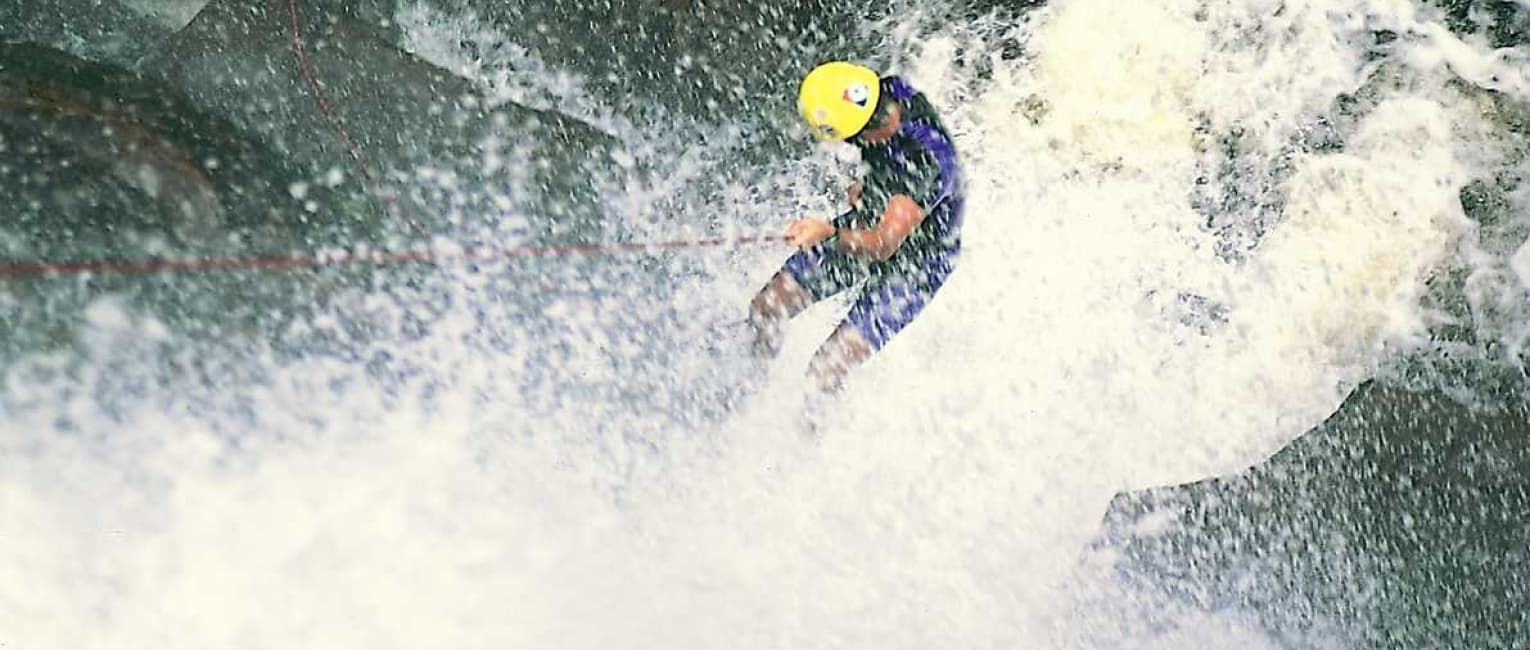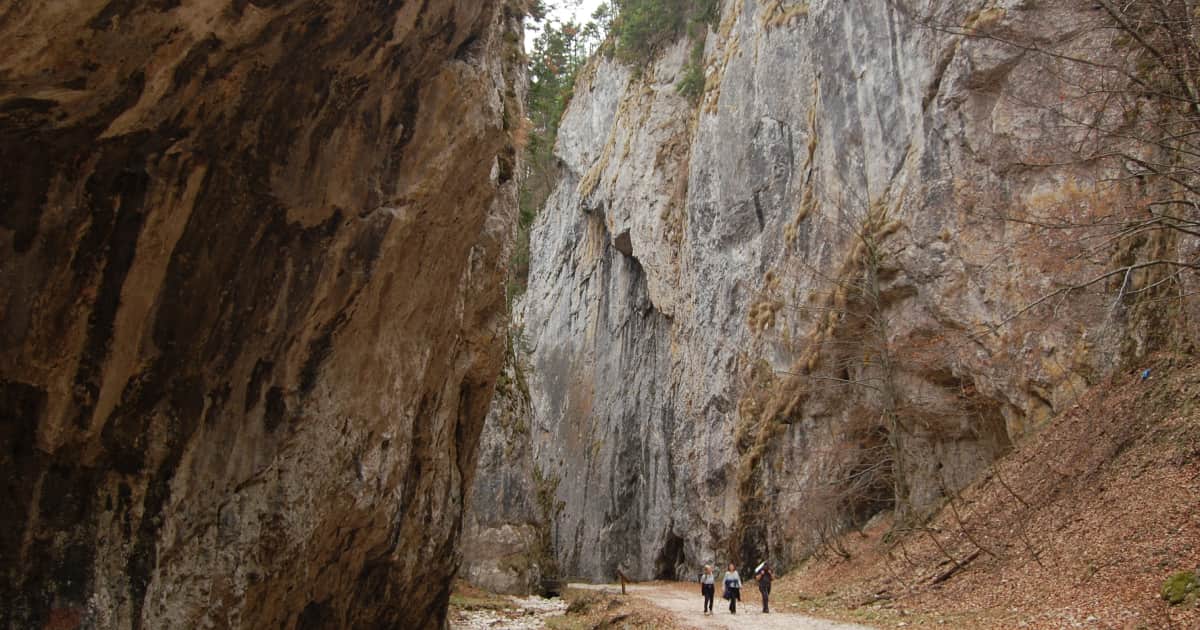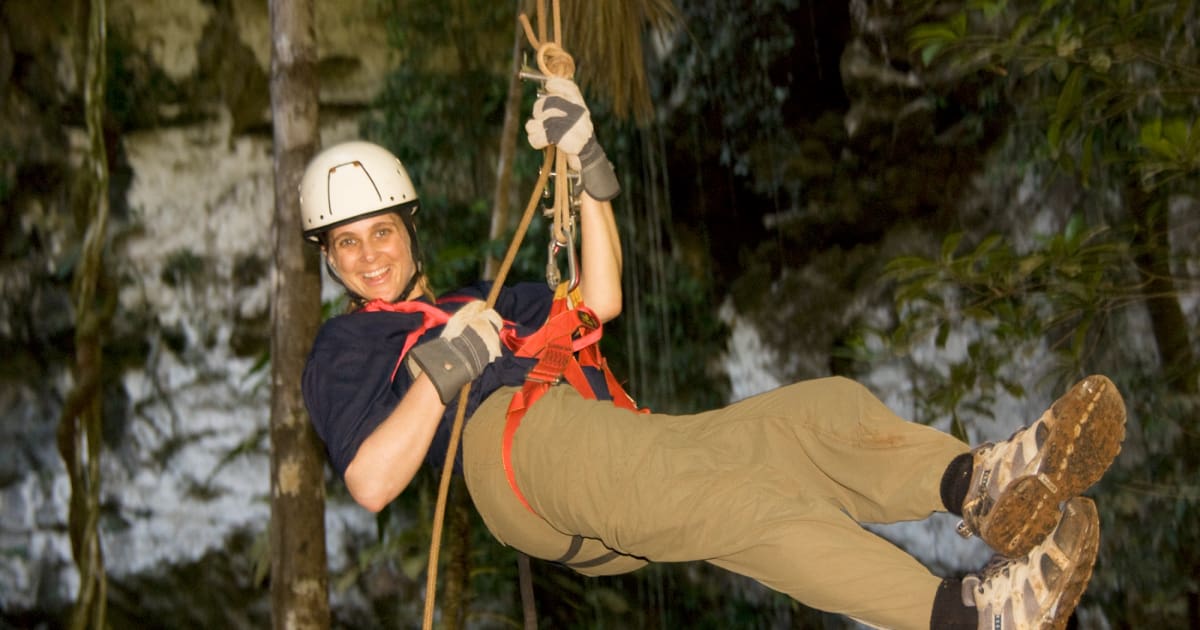
Ultimate Guide To Canyoneering
Canyoneering is a unique, adrenaline-filled adventure sport that combines the best of hiking, climbing, rappelling, caving, and swimming.
Descending into narrow canyons carved by powerful rivers over millions of years; trekking through rugged terrain clad in wetsuits and specialized gear; rappelling down waterfalls as they cascade onto moss-covered boulders below – are just a taste of some of the adventures that await you.
But before you jump headfirst into this thrilling world, canyoneering requires a unique set of skills and equipment, and it's essential to learn the ins and outs of safety, skills, and techniques.
Here at BikeHike we’ve been canyoneering in some of the most incredible destinations across the world, and have been doing this for well over 30 years as part of many of our adventure tours.
This unique sport offers some truly incredible experiences, whether you're looking for an adrenaline-filled adventure or an outdoor enthusiast looking to explore nature's hidden gems from new perspectives.
Let's dive right into the exciting realm of canyoneering!
What Is Canyoneering?
.jpg)
A lot of people compare canyoneering to mountaineering, and they sort of have a point.
However, while mountaineering is concerned with reaching the top of a mountain, canyoneering is all about getting to the bottom.
Canyoneering involves descending a mountainous canyon just for the fun of it.
Although it's now a modern-day adventure sport, it got its origins from the necessity of transportation.
As American explorers and settlers navigated across the early American deserts, they were faced with a maze of canyons in the southwest. As a result, methods of ascending and descending these canyons were practiced. Ropes and anchors were commonplace to this first generation of canyoneers.
After the land was settled with roads and highways, canyon routes were abandoned.
Modern-day canyoneering found its rebirth in the 1960’s when mountaineering and rock climbing equipment was commonplace.
Using this gear, adventurous souls took to their own backyards seeking adventure.
As the public’s perception of this bunch shifted from “crazy thrill-seekers” to “credible adventure seekers,” canyoneering began to take off.
Canyoneering VS Canyoning?
Before we get into it, I just want to cover a question we get asked quite a lot.
What’s the difference between canyoneering and canyoning?
Well, actually, there is no difference, they are both the same activity, just known differently around the world.
So you will hear it referred to as “canyoning” in Europe & South America and “canyoneering” here in North America.
Canyoneering Gear & Equipment List
.jpg)
When it comes to canyoneering, gear and preparation are key factors in ensuring a successful trip. The right equipment and mindset can make all the difference between an unforgettable adventure or an unforgettable afternoon of unwanted scrapes and sratches.
If you’ve never been before you should always head out with expert guides who will provide you with equipment anyway, but just to get an idea of what you’ll need, some essential items include:
> A helmet for head protection against falls and falling debris.
> A harness for securing yourself during descents and climbs.
> Carabiners for attaching gear to your harness.
> Ropes specifically designed for canyoning that are resistant to abrasion and water absorption.
> Webbing or slings for creating anchors or extending rappel devices.
> Rappel devices like figure eights or ATCs that allow you to descend the rope while maintaining control of speed safely.
> Good footwear with good traction to grip wet surfaces and provide ankle support.
> Wetsuits or drysuits depending on the canyon temperature.
> Personal flotation devices if there is a risk of being submerged in currents.
> Gloves for protecting your hands from rough rock surfaces when climbing or rappelling.
> Navigation tools such as maps, compasses, or GPS devices, especially in remote locations.
On top of physical gear, preparation also involves research into weather forecasts, potential hazards, trail difficulty level, and even letting an emergency contact know your whereabouts before starting out on your off-the-beaten-path journey.
Lastly, having mental fortitude goes hand in hand with these practical measures.
Canyoneering requires resilience when things don’t go according to plan – navigating unexpected obstacles while maintaining calm and reassessing risks instead of moving forward blindly.
And, always having contingency plans ready, even if that means turning back sometimes because safety should always come first.
Navigation And Route-Finding

Now you have an idea of the gear needed for a canyoneering adventure, it's important to remember that navigating through these breathtaking landscapes requires more than just physical strength and durable equipment.
Before heading off it’s a good idea to know how to properly use maps, compasses, and GPS devices.
Familiarizing yourself with contour lines on topographic maps can also help you visualize the terrain ahead and know what to expect in terms of potential obstacles or hazards.
Compasses are also fantastic for establishing your bearings and maintaining an accurate sense of direction throughout your journey.
It’s well worth investing in a reliable GPS device so that you know your exact location at all times; however, do not solely rely on technology as it may fail or lose signal – always have backup resources such as paper maps or printed directions handy.
If you know your tour well in advance, it’s always worth taking time to research any available information about the canyon you'll be exploring like guidebooks, or any online resources.
Technical Skills

While having some mountaineering experience or a solid foundation in rappelling is great, there are additional skills that you'll need to get to grips with.
But don’t worry, if you’ve never been canyoneering before your guide will get you up to speed with the basics pretty quick.
Some of the basic skills you will need include:
> Route finding.
> Knot tying.
> Swimming.
> Downclimbing.
> Basic first aid.
As you become more experienced, you’ll learn how to properly assess potential hazards such as loose rocks or unstable anchors.
At the end of the day, practice makes perfect. The more time you spend honing your abilities both on and off the trail, the better prepared you'll be when faced with challenges.
I always recommend staying sharp and seeking out opportunities for learning from experienced instructors or even joining local canyoneering groups if possible.
Hazards
.jpg)
Canyoneering is tremendous fun, but it does come with potential hazards. While some risks are inherent to the sport, others can be mitigated through proper planning and prepping.
Regulations
When planning your trip, research the area you are visiting and check for any specific rules or regulations in place. This can include seasonal closures due to wildlife nesting or breeding periods, permit requirements for certain areas, or restrictions on group size.
Weather
Always check the weather forecast, right up until the day you are heading out. Flash floods are a common danger in narrow slot canyons, as rainwater from miles away can quickly fill these confined spaces with fast-moving water. Canyoneers should always check weather reports before setting out and avoid areas prone to flash flooding during periods of heavy rainfall.
Heat Exhaustion & Dehydration
Heat exhaustion poses a significant risk when exploring dry desert regions popular among many canyon enthusiasts. Dehydration coupled with prolonged exposure under high temperatures puts people at risk for fainting spells or worse health consequences such as heat stroke if they don't take sufficient measures against overexertion before heading out into harsh environments.
Leave No Trace
At BikeHike, we always approach our trips with a commitment to sustainability, and we always follow a “leave no trace” policy.
Some key aspect of minimizing our impact while canyoneering is practicing proper waste disposal techniques.
Always pack out all trash, leftover food, and litter – including biodegradable items like fruit peels and nutshells., and properly dispose of human waste.
Human waste should also be managed responsibly; some areas have established bathrooms nearby, but when none are available, always bury waste at least 200 feet from water sources.
Don’t build cairns or disturb rocks, as these can alter the natural features of the canyon.
By being respectful and setting a few simple rules, we are helping preserve the environment for generations to come.
Taking the time to practice proper waste management and respecting wildlife and their habitats is a small effort but will have a tremendous impact so that future generations have the opportunity to enjoy these awe-inspiring landscapes just as we do today.
Preparing for An Emergency
Unexpected situations such as sudden weather changes, injuries or illnesses, and even getting lost can happen during a trip.
A key aspect of emergency preparedness in canyoneering includes carrying essential items that could mean the difference between life and death in certain scenarios.
These should always be part of your safety kit:
> First-aid kit: A comprehensive first-aid kit containing bandages, gauze, adhesive tape, antiseptic wipes, tweezers, pain relievers, and other necessary medical supplies.
> Communication device: A fully charged cell phone (if there's reception), satellite phone or two-way radio for communication with rescue services if needed.
> Emergency shelter: Lightweight bivy sacks or space blankets are perfect for providing protection against harsh weather conditions in case an unplanned overnight stay becomes necessary.
> Signaling equipment: Whistle, signal mirror or flares will help attract attention from rescuers in case you're stranded or injured.
As vital as having these emergency essentials is knowing how to use them properly in a crisis situation.
If canyoneering is something you intend on taking up a regularly hobby, I highly recommend participating in wilderness medicine courses familiarizing yourself with basic first aid procedures.
This will increase your confidence and ability to respond quickly and effectively when dealing with accidents or health issues on the trail.
Wrapping Up
.jpg)
Canyoneering is more than just a sport; it’s a gateway to unforgettable experiences and memories that will last a lifetime.
Plus, adventure experiences like this will teach you more than just how to rappel down a rock face!
Canyoneering helps build character and teaches respect towards nature while introducing you to your own sense of bravery and learning new skills along the way.
If you are interested in a Canyoneering trip or similar activities, be sure to check out our 5 best canyoneering destinations for more ideas, or get in touch with us about a customized canyoneering adventure.
Happy Climbing
Trish Sare.
About The Author
 Trish Sare is the owner of BikeHike and a passionate outdoor enthusiast with over 30 years of experience as a world traveler. She's lived, traveled, and guided extensively in North, South and Central America, Europe, Oceania, Africa, and Asia. She has guided and helped to develop every one of our multi-sport holidays. In her spare time, Trish is usually outdoors either mountain biking, hiking, sea kayaking, trail running, or climbing. Trish has a passion for the world and all of the amazing cultures that inhabit it and does her best to immerse herself directly into their distinctive lifestyles.
Trish Sare is the owner of BikeHike and a passionate outdoor enthusiast with over 30 years of experience as a world traveler. She's lived, traveled, and guided extensively in North, South and Central America, Europe, Oceania, Africa, and Asia. She has guided and helped to develop every one of our multi-sport holidays. In her spare time, Trish is usually outdoors either mountain biking, hiking, sea kayaking, trail running, or climbing. Trish has a passion for the world and all of the amazing cultures that inhabit it and does her best to immerse herself directly into their distinctive lifestyles.